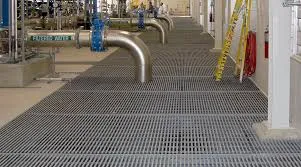
-
 Afrikaans
Afrikaans -
 Albanian
Albanian -
 Amharic
Amharic -
 Arabic
Arabic -
 Armenian
Armenian -
 Azerbaijani
Azerbaijani -
 Basque
Basque -
 Belarusian
Belarusian -
 Bengali
Bengali -
 Bosnian
Bosnian -
 Bulgarian
Bulgarian -
 Catalan
Catalan -
 Cebuano
Cebuano -
 China
China -
 China (Taiwan)
China (Taiwan) -
 Corsican
Corsican -
 Croatian
Croatian -
 Czech
Czech -
 Danish
Danish -
 Dutch
Dutch -
 English
English -
 Esperanto
Esperanto -
 Estonian
Estonian -
 Finnish
Finnish -
 French
French -
 Frisian
Frisian -
 Galician
Galician -
 Georgian
Georgian -
 German
German -
 Greek
Greek -
 Gujarati
Gujarati -
 Haitian Creole
Haitian Creole -
 hausa
hausa -
 hawaiian
hawaiian -
 Hebrew
Hebrew -
 Hindi
Hindi -
 Miao
Miao -
 Hungarian
Hungarian -
 Icelandic
Icelandic -
 igbo
igbo -
 Indonesian
Indonesian -
 irish
irish -
 Italian
Italian -
 Japanese
Japanese -
 Javanese
Javanese -
 Kannada
Kannada -
 kazakh
kazakh -
 Khmer
Khmer -
 Rwandese
Rwandese -
 Korean
Korean -
 Kurdish
Kurdish -
 Kyrgyz
Kyrgyz -
 Lao
Lao -
 Latin
Latin -
 Latvian
Latvian -
 Lithuanian
Lithuanian -
 Luxembourgish
Luxembourgish -
 Macedonian
Macedonian -
 Malgashi
Malgashi -
 Malay
Malay -
 Malayalam
Malayalam -
 Maltese
Maltese -
 Maori
Maori -
 Marathi
Marathi -
 Mongolian
Mongolian -
 Myanmar
Myanmar -
 Nepali
Nepali -
 Norwegian
Norwegian -
 Norwegian
Norwegian -
 Occitan
Occitan -
 Pashto
Pashto -
 Persian
Persian -
 Polish
Polish -
 Portuguese
Portuguese -
 Punjabi
Punjabi -
 Romanian
Romanian -
 Russian
Russian -
 Samoan
Samoan -
 Scottish Gaelic
Scottish Gaelic -
 Serbian
Serbian -
 Sesotho
Sesotho -
 Shona
Shona -
 Sindhi
Sindhi -
 Sinhala
Sinhala -
 Slovak
Slovak -
 Slovenian
Slovenian -
 Somali
Somali -
 Spanish
Spanish -
 Sundanese
Sundanese -
 Swahili
Swahili -
 Swedish
Swedish -
 Tagalog
Tagalog -
 Tajik
Tajik -
 Tamil
Tamil -
 Tatar
Tatar -
 Telugu
Telugu -
 Thai
Thai -
 Turkish
Turkish -
 Turkmen
Turkmen -
 Ukrainian
Ukrainian -
 Urdu
Urdu -
 Uighur
Uighur -
 Uzbek
Uzbek -
 Vietnamese
Vietnamese -
 Welsh
Welsh -
 Bantu
Bantu -
 Yiddish
Yiddish -
 Yoruba
Yoruba -
 Zulu
Zulu
fiberglass ducts demonstrate exceptional resistance against
Exceptional Resistance of Fiberglass Ducts A Game Changer in Ductwork Solutions
In today's rapidly evolving industrial and commercial environments, the demand for durable, reliable materials is greater than ever. One material that has proven to be a game-changer in the realm of ductwork solutions is fiberglass. Fiberglass ducts are renowned for their exceptional resistance against various environmental and operational challenges, making them an ideal choice for businesses seeking both efficiency and longevity.
Understanding Fiberglass Ducts
Fiberglass ducts are constructed from reinforced plastic, primarily composed of glass fibers embedded in a resin matrix. This unique composition grants fiberglass ducts distinct properties, including lightweight structures, excellent thermal insulation, and resistance to corrosion. Unlike traditional materials such as metal or plastic, fiberglass offers a combination of durability and flexibility, making it suitable for a wide range of applications, from commercial buildings to industrial facilities.
Resistance to Corrosion and Chemical Damage
One of the most outstanding characteristics of fiberglass ducts is their exceptional resistance to corrosion. In environments subject to moisture, chemicals, or acidic compounds, traditional duct materials often falter, leading to costly repairs and replacement. However, fiberglass excels in such conditions. It resists rust, rot, and degradation, ensuring longevity and maintaining airflow efficiency. Industries that deal with corrosive chemicals, such as pharmaceuticals or wastewater treatment, benefit significantly from integrating fiberglass ducting into their systems.
Thermal Insulation Properties
fiberglass ducts demonstrate exceptional resistance against

Another remarkable aspect of fiberglass ducts is their thermal insulation capabilities. The material’s inherent properties allow it to maintain temperature consistency, reducing energy costs associated with heating and cooling. In climate-controlled environments, where maintaining specific temperatures is crucial, fiberglass ducts help to eliminate the risk of condensation and reduce energy loss. This enhances overall system efficiency and supports a more sustainable approach to energy consumption, benefiting both businesses and the environment.
Fire Resistance
Safety is always a priority, particularly in sectors where flammable gases and substances are present. Fiberglass ducts have a high fire-resistance rating, providing peace of mind when it comes to fire hazards. Unlike some materials that can emit toxic fumes when heated or ignited, fiberglass is non-combustible and does not contribute to the spread of fire. This feature makes fiberglass ducts a preferred choice in locations where fire safety is a crucial concern, ensuring compliance with relevant building codes and standards.
Reduced Maintenance
The longevity and durability of fiberglass ducts translate into reduced maintenance costs. Businesses can enjoy lower operational expenses as fiberglass does not require the same level of upkeep as metal or other duct materials that may suffer from wear and tear over time. This characteristic not only leads to reduced downtime but also allows for greater budget allocation toward other necessary operational areas.
Conclusion
In conclusion, the exceptional resistance of fiberglass ducts against corrosion, chemicals, temperature fluctuations, and fire is transforming the landscape of ductwork solutions. Their lightweight nature, combined with outstanding thermal insulation properties and minimal maintenance requirements, positions fiberglass as an increasingly popular choice among industries requiring efficient airflow management. As businesses continue to seek materials that enhance performance while promoting sustainability, fiberglass ducts are standing out as a practical and resilient solution. The future of ducting looks bright, and fiberglass is at the forefront of this evolution, paving the way for safer, more efficient, and sustainable operational practices.
Latest news
-
Exploring the Benefits of Top Hammer Drifter Rods for Enhanced Drilling PerformanceNewsJun.10,2025
-
High-Precision Fiberglass Winding Machine for GRP/FRP Pipe Production – Reliable & Efficient SolutionsNewsJun.10,2025
-
FRP Pipes & Fittings for Shipbuilding - Corrosion-Resistant & LightweightNewsJun.09,2025
-
Premium FRP Flooring Solutions Durable & Slip-ResistantNewsJun.09,2025
-
Premium Fiberglass Rectangular Tanks Durable & Lightweight SolutionNewsJun.09,2025
-
Tapered Drill String Design Guide Durable Performance & UsesNewsJun.09,2025









